Panasonic Lumix DMC-TZ4 Review
Panasonic Lumix DMC-TZ4
Panasonic's ultimate travel camera just got even better
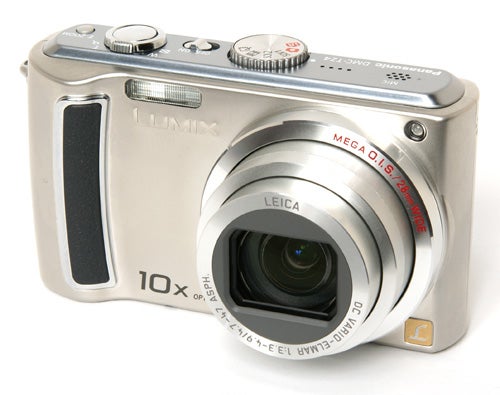
Verdict
Key Specifications
- Review Price: £250.00
Two of the big success stories of the past year have been Panasonic’s Lumix TZ2 and TZ3. In a market saturated with tiny over-powered 3x zoom compacts, the 6-megapixel TZ2 and the 7-megapixel TZ3 offered a unique specification, with a relatively large but ergonomically designed body, a high quality Leica-branded 10x optical zoom lens and a range of easy-to-use automatic functions. Both cameras sold very well, especially the higher resolution TZ3, so it’s no surprise that Panasonic has followed up with two new TZ models, the 8.1-megapixel TZ4 and the 9.1-megapixel TZ5. I’m hoping to get the TZ5 in very soon, but for today I’ve got the TZ4, which replaces the TZ2 in Panasonic’s lineup.
The TZ series are sold as travel cameras, and they are well suited for that task. Like the other models in the range, the TZ4 has a very robust all-metal body and is clearly designed to survive a few bumps and bangs. It is somewhat larger than the typical pocket compact, but the shape of the body with its large textured handgrip is very comfortable and secure to hold. It is actually a couple of millimetres smaller and few grams lighter than the TZ2, measuring 103.3 x 59.3 x 36.2 mm and weighing in at 208g empty or 234g including battery and memory card.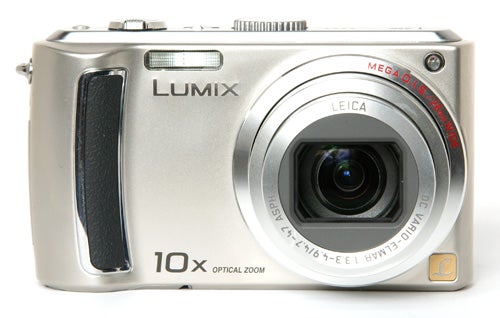
There are a few more high-zoom compacts on the market than there used to be, but it’s by no means a crowded field. The main competition for the TZ4 is undoubtedly the excellent Ricoh Caplio R7 (£150), but the ever-formidable Canon has also entered this area of the market with the impressive PowerShot SX100 IS (£230). The TZ4 is currently on sale at around £250, which looks a little expensive compared to its rivals.
There’s no denying that you do get a lot of camera for your money though. The big selling point is that big zoom range. The 10x zoom lens has a focal length range equivalent to 28-280mm, incorporating genuine wide angle and a decent telephoto in one fairly compact package, and providing enough versatility to cope with panoramic landscapes, distant highlights and anything in between. It incorporates Panasonic’s proprietary MegaOIS optical image stabilisation system, which as we’ve seen on previous models is one of the best on the market. Since few people will pack a tripod on their holidays (unless they’re like me, of course), image stabilisation is essential for a camera with such a long telephoto capability. The lens is also fairly fast for a big zoom, with a maximum aperture of f/3.3 – f/4.9, although it’s a bit slower than Canon’s 36-360mm lens on the SX100 IS.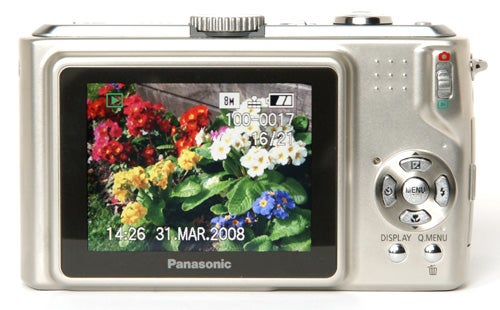
Apart from the obvious increase in sensor resolution the TZ4 has several other improvements over the TZ2. The LCD monitor is still 2.5 inches but now has a resolution of 230k dots. It is nice and bright with a good refresh rate, but the normal angle of view is rather restricted compared to some other recent cameras, approximately 45 degrees in either direction, which is a problem if you’re holding the camera above your head to shoot over a crowd. There is a high-angle setting available in the menu, but it only increases the downward angle by a few degrees. Maximum sensitivity is also increased from 1250 ISO to 1600 ISO.
The TZ4 is designed to be a snapshot camera. The main mode dial has only four main shooting options, including Panasonics’s Intelligent Auto mode, in which the camera automatically selects the appropriate scene mode for the subject. As well as this there is a standard auto mode in which all menu options are available, and two scene mode settings, allowing rapid switching between two pre-selected choices from the 22 available scene programs.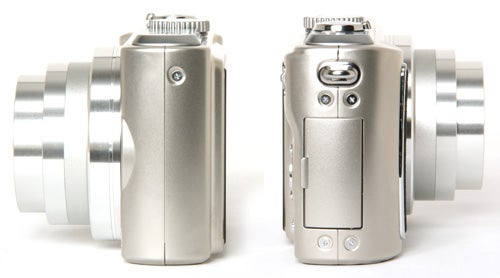
Like a lot of compacts the TZ4 has both a main menu for major camera settings, and a shooting menu allowing quick access to frequently used options such as IS mode, drive mode, AF area, white balance, ISO and picture size. The main menu holds some useful options, including a selection of colour modes, three different aspect ratios (4:3, 3:2 and 16:9) and three light meter modes (spot, c/w and multi-zone). The control layout is concise and logical, the menus are quick and responsive and the camera is very easy to operate.
The TZ2 was by no means a slow camera, but the TZ4 is even quicker. It starts up in a touch over two seconds and shuts down again in about the same. Single-shot shooting speed has been dramatically improved, with a shot-to-shot time of approximately 1.6 seconds, while in continuous mode it can manage a very impressive two frames per second and maintain it until the memory card is full. 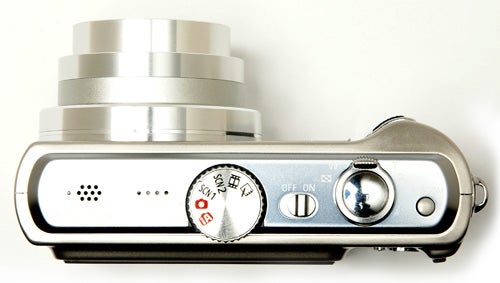
The autofocus system is also fast, locking on in about half a second even in poor light. It focuses well in very low light and even darkness thanks to a decent AF assist lamp. In cases where it can’t focus, the camera automatically sets itself to a pan-focus setting, producing acceptably sharp results at medium range. As befits a camera designed for travel, battery life is exceptionally good. It is powered by a chunky little 1000mAh Li-ion cell that Panasonic claims is good for 330 shots. I took about 150 and the charge meter was still showing two out of three bars, so this is probably accurate.
If you’re choosing a camera for a once-in-a-lifetime holiday you want to be sure to get some good pictures, so image quality is a crucial issue. Fortunately the TZ4 does not disappoint. Most of the credit goes to that excellent lens, which as usual lives up to its Leica badge. It produces pin-sharp detail right across the frame, even into the far corners, with no trace of barrel or pincushion distortion at any focal length. 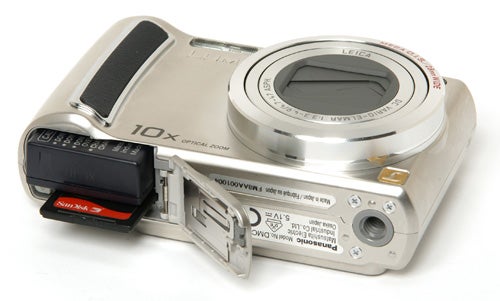
The sensor too performs well, despite Panasonic’s insistence on using a tiny 1/2.5-inch CCD as usual. I’m of the opinion that eight megapixels is pretty much the optimum resolution for this type of sensor, producing the best compromise between colour depth and dynamic range versus image noise at higher ISO settings. The TZ4 would seem to back me up on this, producing outstanding colour reproduction, good shadow detail and few blown-out highlights.
Image quality remains good up to 400 ISO, and while there is a lot of noise at 800 and 1600 colour balance and exposure remain consistent and the results could at least make small prints. All in all a very impressive performance from what could be another classic from Panasonic.
”’Verdict”’
Having enjoyed well-deserved success with the TZ2 and TZ3, Panasonic has followed up with another excellent camera. The TZ4 has bullet-proof build quality, excellent ergonomics, is extremely easy to use and performs well. It doesn’t have much in the way of creative features, but it is versatile enough and capable enough to produce a good picture under almost any circumstances. It really is an ideal travel camera.
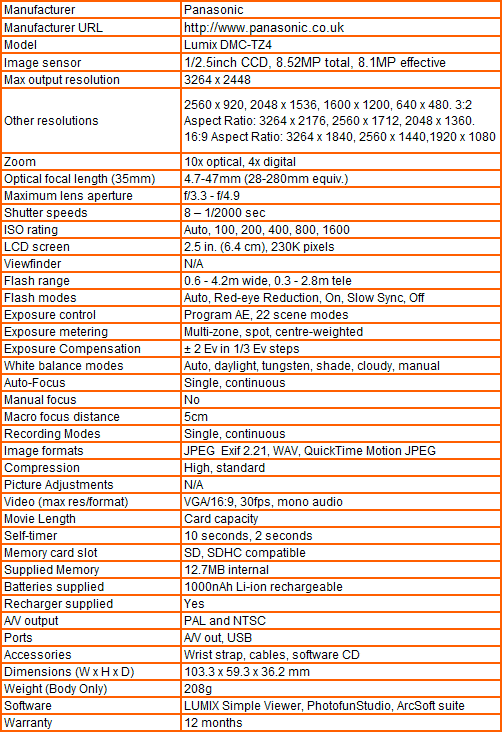
”A range of test shots are shown over the next few pages. Here, the full size images at the minimum and maximum ISO settings have been reduced for bandwidth purposes to let you see the full image, and a series of crops taken from original full resolution images at a range of ISO settings have been included in order for you to gain an appreciation of the overall quality.”
—-
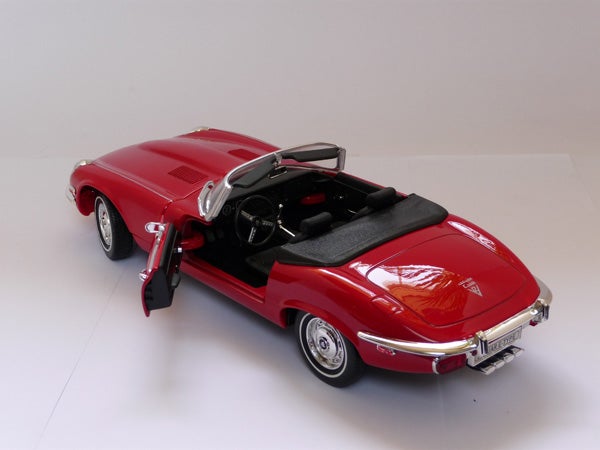
This is the full frame at the minimum ISO setting.
—-
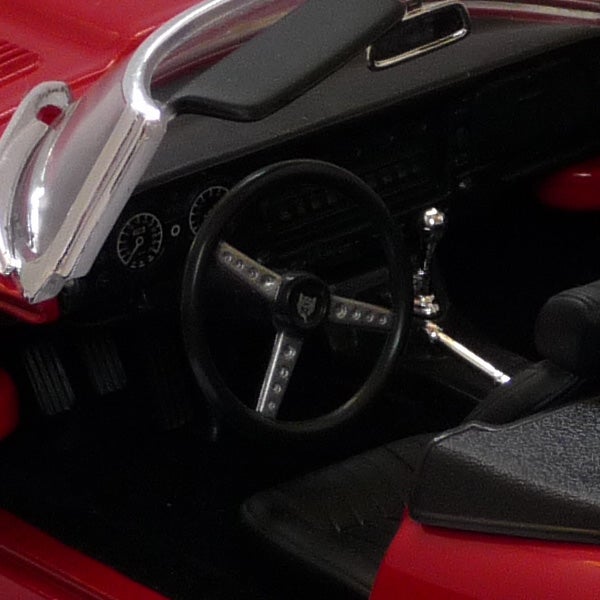
At 100 ISO the image quality is very good with plenty of detail and vibrant colour.
—-
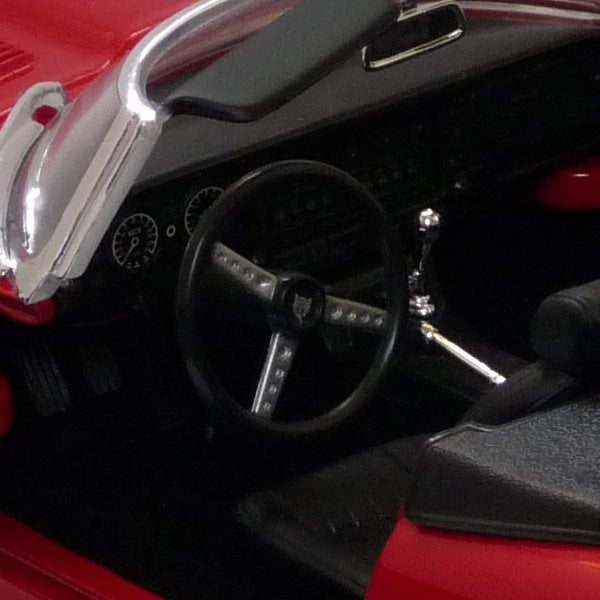
Virtually no difference at 200 ISO.
—-
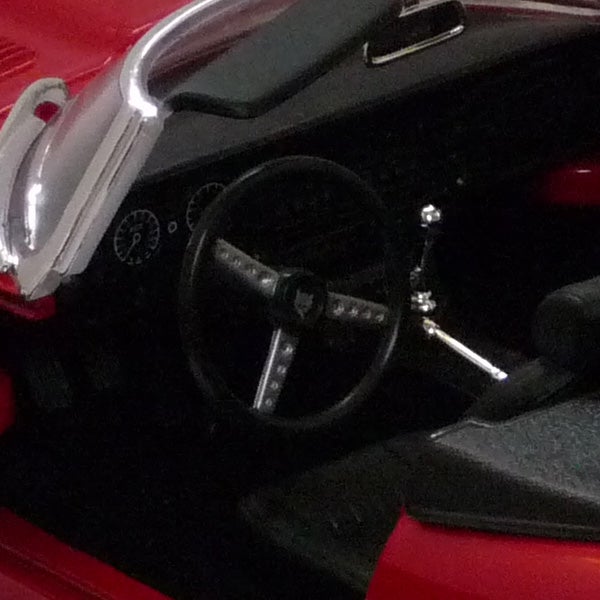
There is some visible noise at 400 ISO, but the level of detail remains high.
—-
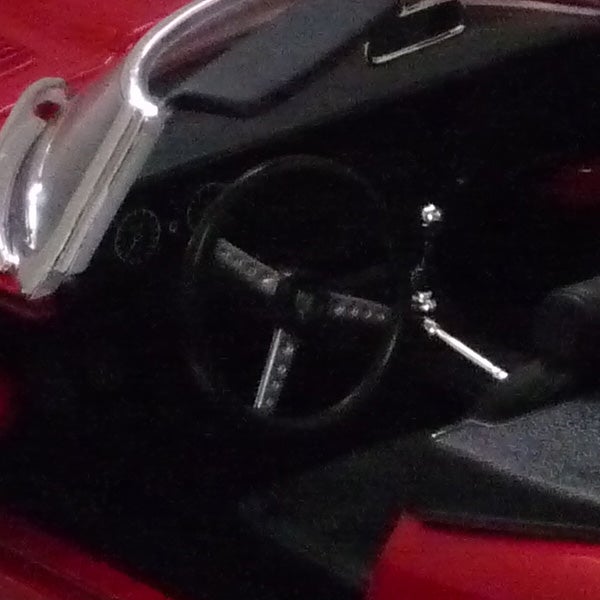
Noise levels are much higher at at 800 ISO, and a lot of detail has been lost.
—-
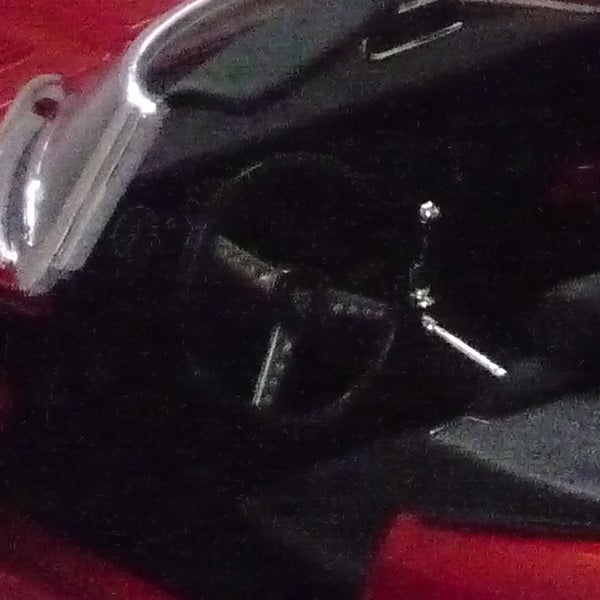
At 1600 ISO the noise level is just about acceptable for a small print.
—-
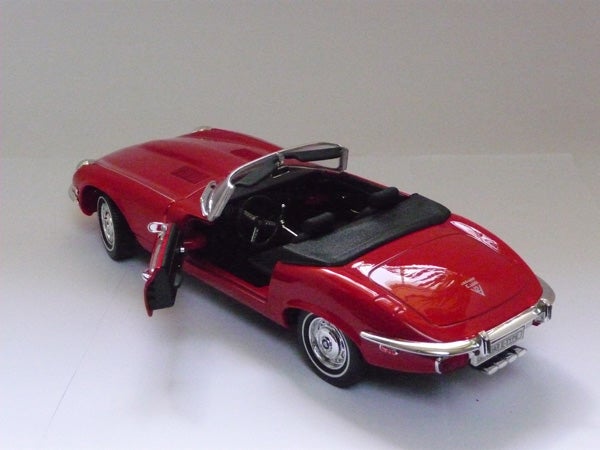
This is the full frame at 1600 ISO.
—-
”A range of general test shots are shown over the next two pages. In some cases, the full size image has been reduced for bandwidth purposes, and a crop taken from the original full resolution image has been placed below it to show the overall image quality. Some other pictures may be clicked to view the original full-size image.”
—-

Here’s the usual detail test shot of the West Window of Exeter Cathedral, for you to compare with other cameras. See below for a full res crop, or click to see the whole picture.
—-

The level of fine detail is very good for an 8MP camera, thanks mainly to the excellent Leica-branded lens.
—-

Even at the 28mm wide end there is no barrel distortion.
—-

Centre sharpness is superb.
—-
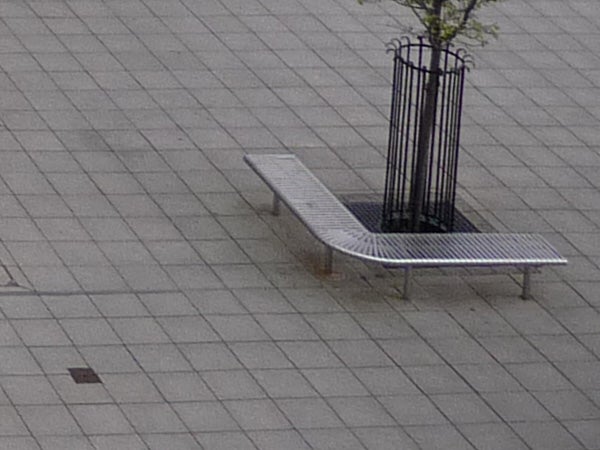
Corner sharpness likewise.
—-
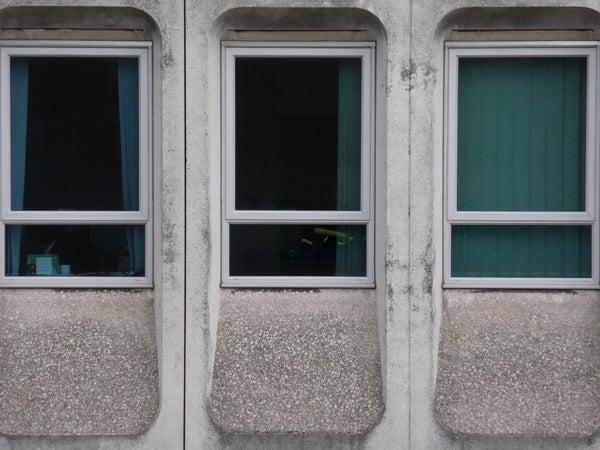
Negligible pincushion distortion at the telephoto end.
—-
”Here are some general test shots to help evaluate the camera’s overall image quality, including the zoom range of the lens. Some pictures may be clicked to download the full size original image.”
—-

The 28mm wide angle is ideal for panoramic landscapes.
—-

The 10x zoom lens has a telephoto end equivalent to 280mm.
—-

Colour reproduction is rich and vibrant, with good highlight detail.
—-

The 8MP sensor has good dynamic range, with both shadow and highlight detail in this shot.
—-
Trusted Score
Score in detail
-
Value 7
-
Image Quality 9
Features
| Camera type | Digital Compact |
| Megapixels (Megapixel) | 8.1 Megapixel |
| Optical Zoom (Times) | 10x |

